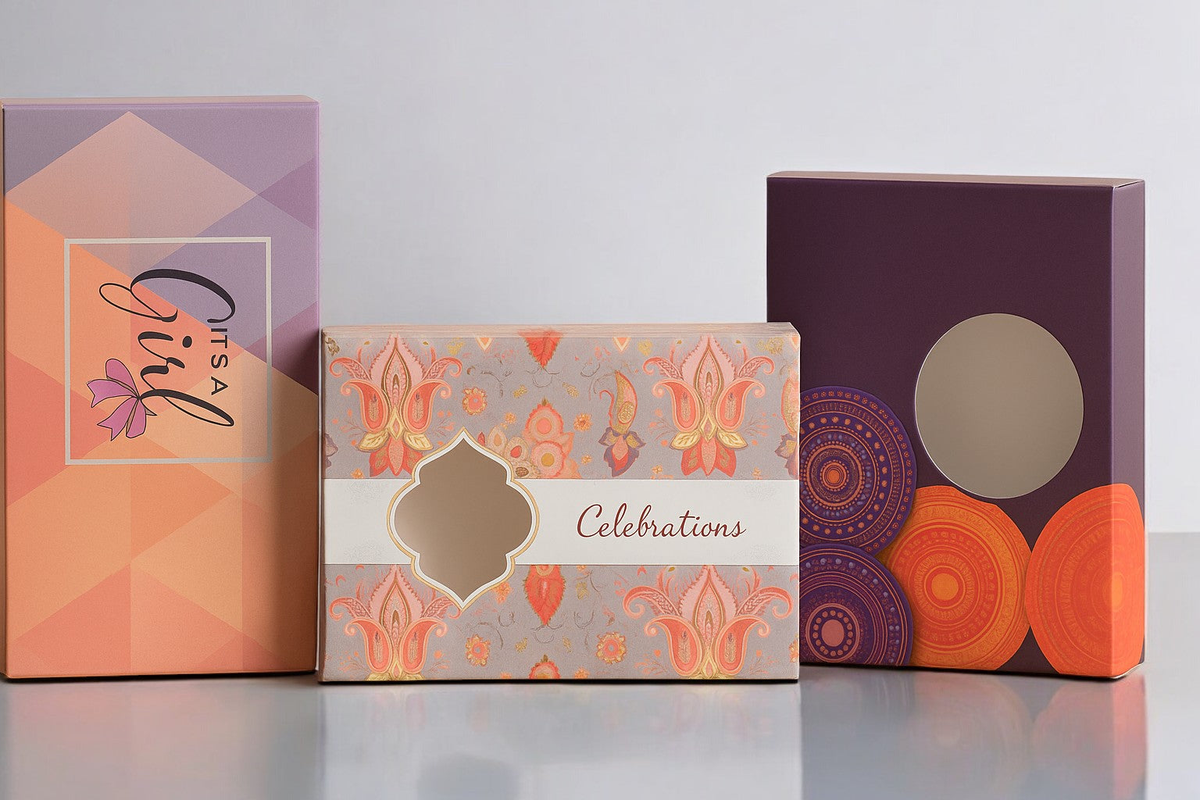Customised packaging boxes are essential for drawing clients and strengthening brand identity in the cutthroat field of product marketing. However, careful thought must be given to the design of these boxes in order to steer clear of potential problems that could reduce their usefulness. Below, we explore the top mistakes to avoid when creating personalised packaging boxes to ensure they meet your brand's goals and delight customers.
1. Making the design too complicated
Packing the container with too many words, artwork, or logos is one of the most frequent errors. Overloading the design might overwhelm customers and take attention away from the message, even when the goal may be to convey as much as possible. Designs that emphasise the brand message and are clear, uncomplicated, and aesthetically pleasing work far better.
2. Ignoring the People You Want to Reach
Your target audience's tastes and expectations should be reflected in your personalised packaging. Designs may not emotionally connect if their age, gender, cultural background, or purchase habits are not taken into account. Younger customers could be drawn to designs that are lively and playful, for example, whilst a more sophisticated clientele would be drawn to packaging that is sleek and simple.
3. Sacrificing Aesthetics for Aesthetics
A beautiful design that ignores functional aspects of packaging can negatively impact the customer experience; problems like hard-to-open boxes, flimsy materials, or non-recyclable components can irritate users; it is crucial to strike a balance between aesthetics and functionality to ensure sustainability, durability, and usability.
4. Selecting Low-Quality Materials
The material used for individualised packaging speaks volumes about a brand's quality and values; choosing cheap, flimsy materials may save money in the short term, but it can harm your reputation over time. Because customers often equate packaging quality with the product itself, investing in eco-friendly, long-lasting materials can improve your brand image.
5. Ignoring Consistency in Brands
An additional frequent mistake is inconsistent branding. Personalised packaging should correspond with your brand’s colors, typefaces, logo placement, and tone of voice. Deviating from existing branding might confuse buyers and degrade your brand identity. Over time, consistency fosters trust and strengthens brand identification.
6. Ignoring Trends in Sustainability
Ignoring sustainable practices can drive away clients that value environmental responsibility in today's eco-conscious economy. Excessive packaging or non-recyclable materials can turn off shoppers who care about the environment. Using sustainable solutions, like recycled or biodegradable materials, can show social responsibility and improve the appeal of your business.
7. Insufficient Feedback and Testing
Before going into mass manufacturing, many companies fail to test their packaging designs. Errors like improper sizes, misaligned graphics, or unusable features may result from this. Focus groups and prototype testing can be used to find possible problems and make sure the finished product lives up to customer expectations.
8. Ignoring cost-effectiveness
Despite the allure of making significant investments in original and creative designs, profitability may suffer if cost-effectiveness is overlooked. Striking a balance between innovation and affordability is vital to guarantee that the packaging boosts the product's value without inflating production costs unnecessarily.
Conclusion
Careful planning and attention to detail are necessary when designing personalised packaging boxes. By avoiding common mistakes like overcomplicating designs, ignoring sustainability, or ignoring functionality, businesses can create packaging that not only enhances brand identity but also provides a seamless customer experience. Keep in mind that excellent packaging is a potent marketing tool that may enhance your brand and create a lasting impression; it is more than just a container.


